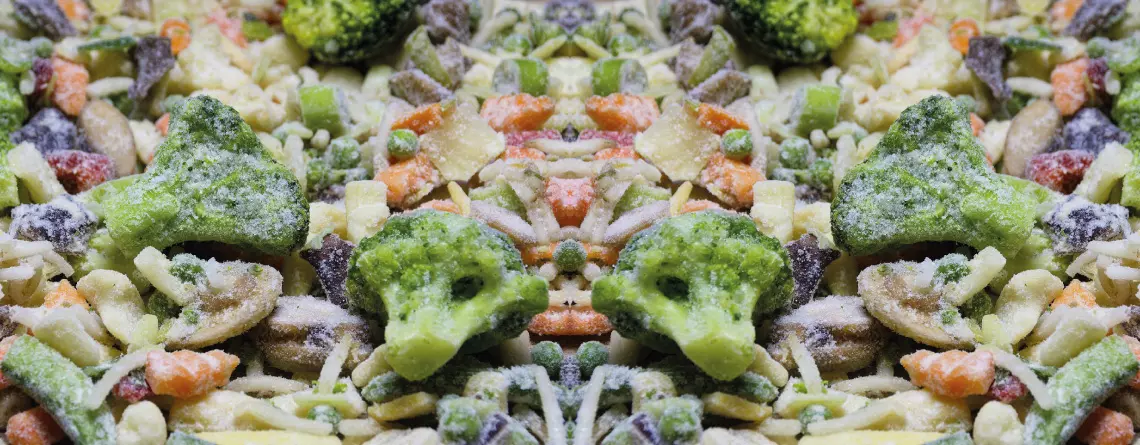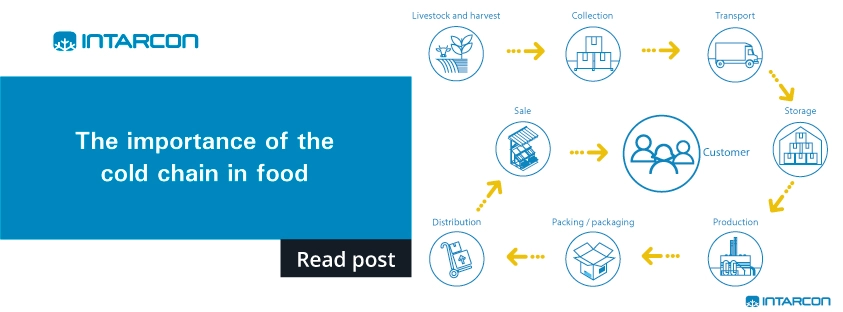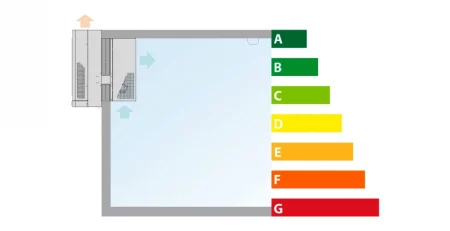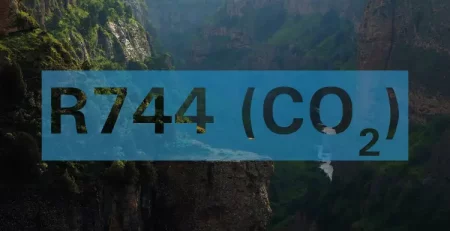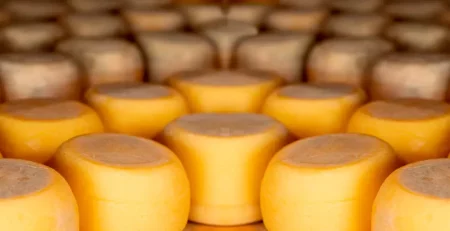The importance of freezing food
INTARCON2022-11-04T11:14:05+01:00Today, the method of freezing food to preserve it in the best possible conditions is one of the most extended methods, together with food refrigeration, although it is important to know the key factors that determine good food freezing.
What is freezing food?
Food freezing is a food preservation process based on exposing food to temperatures below its freezing point, a point at which the state of matter changes and the properties of the product are altered, turning it into ice and solidifying all the water or moisture contained in the food. Normally this point is between -18ºC and -35ºC, although this will depend on the type of product to be frozen.
The purpose of this process is to eliminate all activity of micro-organisms or bacteria in the food without significantly altering its nutritional content, and thus its spoilage. In addition, freezing significantly reduces chemical and enzymatic activity, such as oxidation of the food.
What types of freezing are there?
Depending on the equipment used and the speed of the process, three types of freezing can be distinguished:
- Slow: this is the most common case and is used for domestic use or large freezing chambers.
- Medium: it is carried out with cold air tunnels at temperatures down to -40ºC.
- Fast: mainly used in the industrial and professional field, it consists of abrupt temperature changes achieving thermal stabilisation around -18ºC.
Depending on the freezing technique used, we can differentiate:
By contact: it is mainly used for seafood and fish, the process is achieved by extracting heat from the food thanks to the contact of thermally conductive plates at very low temperatures.
Cryogenic: this process is carried out with cryogenic fluids such as nitrogen, carbon dioxide, freon, etc. This process is also part of deep-freezing due to its speed, although it is very costly.
By air: this process is carried out by means of cold air currents that extract the heat from the food until a controlled temperature is reached.
What needs to be taken into account when freezing food?
To preserve food in the best conditions, the freezing process must be followed correctly, as a bad freezing method chosen for an unsuitable product can damage its conditions and even the whole preservation process, leading to the deterioration of the food.
Bacterial activity
It is important to consider that, although bacterial activity is mostly paralysed, they continue to live during the process and it is vitally important to maintain the cold chain in order to prevent bacterial activity from restarting and thus food spoilage. By breaking the cold chain, with the reactivation of bacterial activity, the food would no longer be optimal to be frozen again, so this method would no longer be effective.
Freezing time
In relation to the freezing time, it must be taken into account that a food can conserve its optimum properties during the process for up to 12 months, ensuring its quality and the preservation of its properties. But when this time is longer or when it is not in optimal freezing conditions, the activity of the microorganisms that was paralysed will disappear and will not proliferate when it is defrosted, so that some of its properties will be lost and it will not be optimal for safe consumption.
Nutritional value
Another important factor to take into account is the alteration of the nutritional value of certain foods, as well as their composition, shape, etc. Freezing in normal terms and carrying out the process correctly should not have a major impact on the nutritional content of the food, although it should be noted that in deep-freezing processes its impact is even less.
In the case of fruit and vegetables, blanching is ideal; they are placed in boiling water for a short period of time and then in ice water, after drying them properly, they can be frozen. This process is done in order to deactivate some enzymes or yeasts before freezing.
In the case of meat or fish, the freezing process does not entail a significant loss of vitamins or proteins from the food. However, it is important to protect the food with special bags or wrappings that protect the surface of the food from freezer burn.
Recommendations for freezing food
Furthermore, it is important to know that, for an optimal freezing process, freezers should ideally always be kept below -18ºC. On the other hand, it is also important not to freeze any food that is hot, as this would cause the average temperature of the freezer to rise and therefore negatively affect the rest of the stored products.
Protection of the food to be frozen is also an important factor. Freezing in airtight containers, airtight bags or freezing the food under vacuum can greatly help preservation.

Foods that should not be frozen
It is recommended not to subject these foods to freezing processes due to the fact that they may lose properties, largely because of their texture. Although freezing is feasible if carried out correctly, their capacity to deteriorate in this process is greater. These include:
- Vegetables and fruits that will later be consumed raw. Although it is possible to freeze them if they have been processed prior to consumption.
- Foods with a high fat content, such as creams and some sauces, which tend to break when frozen.
- Dairy products in general are at risk of shattering.
- High starch foods such as pasta, potatoes and rice.
